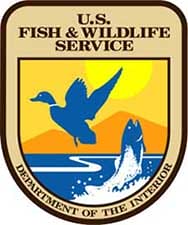

Washington, DC -(AmmoLand.com)- Science forms the cornerstone of all decisions made under the Endangered Species Act (ESA), and independent peer reviewers are critical in confirming that science is appropriately gathered, reviewed and interpreted.
To ensure that its peer review process is as rigorous, transparent and consistent as possible, the U.S. Fish and Wildlife Service has updated its policy guidance for conducting such scientific peer reviews on listing and recovery actions.
“It is vital that the public be able to see and understand the decision-making processes that the Service employs, and that we use the best science, free from bias or political interference,” said Service Director Dan Ashe. “While our policy for scientific peer review has always been robust, we felt it could be improved. We hope greater understanding of the integrity of our scientific process will lead to greater support for one of our most important wildlife conservation laws.”
The Union of Concerned Scientists (UCS) called the updated peer review guidance a “strong effort to improve processes that form the scientific underpinnings of the ESA.”
“The new policy makes significant strides toward robust and transparent peer-review at the U.S. Fish and Wildlife Service,” said Andrew Rosenberg, director of the Center for Science and Democracy at UCS. “The public needs greater access to and understanding of the science that goes into species listing decisions. Ongoing improvements should continue to strengthen the policy for managing conflicts of interest and ensuring the independence of reviewers.”
The updates and clarifications build on existing policies used by the Service, such as its 1994 Peer Review Policy and the 2004 Information Quality Act Guidelines by the Office of Management and Budget. Both guide how the Service seeks and incorporates independent peer reviews of ESA listing and recovery actions, such as what information is subject to peer review, the selection of appropriate peer reviewers and opportunities for public participation.
Some highlights of the guidance include:
- Requiring that each reviewer submit a conflict of interest form that will be made available to the public by posting along with the peer review plan on the Service’s Science Excellence website.
- Ensuring independence in the selection of peer reviews by having a different office conduct peer reviewer selection from the one that authored the document.
- Contracting out the selection and coordination of the peer review process when the ESA listing or recovery action is highly complex or controversial.
For the full peer review guidance or more information on ESA listing and recovery processes, please visit: Improving the ESA webpage.
The ESA provides a critical safety net for fish, wildlife and plants and has prevented the extinction of hundreds of imperiled species, as well as promoting the recovery of many others.
The Service is actively engaged with conservation partners and the public in the search for improved and innovative ways to conserve and recover imperiled species.
About the U.S. Fish and Wildlife:
The mission of the U.S. Fish and Wildlife Service is working with others to conserve, protect, and enhance fish, wildlife, plants, and their habitats for the continuing benefit of the American people. We are both a leader and trusted partner in fish and wildlife conservation, known for our scientific excellence, stewardship of lands and natural resources, dedicated professionals, and commitment to public service. For more information on our work and the people who make it happen, visit www.fws.gov.
For more information on our work and the people who make it happen, visit http://www.fws.gov/. Connect with our Facebook page, follow our tweets, watch our YouTube Channel and download photos from our Flickr page.
